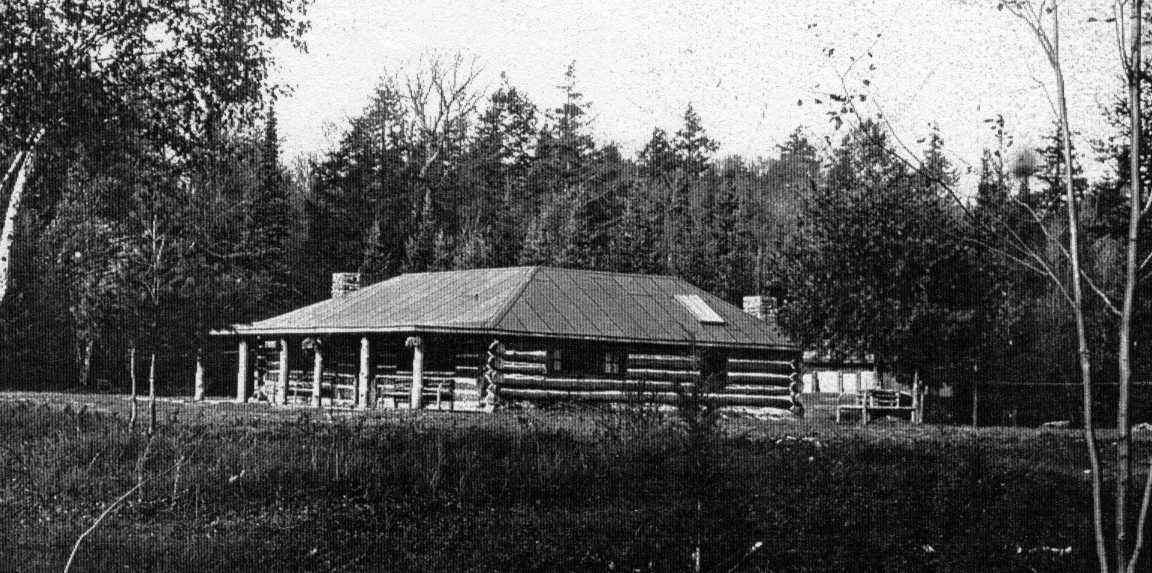 |
|
First Limberlost Lodge, c. 1921-1922 (Barbara Paterson Collection)
|
Limberlost Resort was established in the area of the township originally claimed in the 1870s and 1880s by free land grant settler families with names like McMaster, Storrie, Emberson, and Hodgson. As with most, these early families did not have long-term success in farming and had moved on by the early part of the last century, some selling their lands for the timber rights.
By 1920, Roland Joseph Gordon Hill (Gordon), born in 1894 to Annie and Thomas Hill and grandson of the Reverend Robert Norton Hill (Hillside pioneer), purchased some of this land on the northeast shore of Clear Lake. Clear Lake was originally named Sinclair Lake during the township survey, and in 1939 the name was again changed to Lake Solitaire. In 1921 Gordon opened Limberlost Lodge. A year later, most of the lodge was destroyed by fire, but by 1923 he had erected a new stone building.
In June 1923, Gordon married Marion Higgins, and together they developed Limberlost into a prominent year-round destination that offered a unique wilderness experience to their guests in all seasons. Cabins and a smaller additional lodge were built to accommodate the growing demand. The adjacent lands, now owned by J. A. Bauer, but originally cleared by Mathew McMaster, produced hay for Gordon’s many horses, and at some time the abandoned McMaster home was used as staff quarters. Over the years, the Hills purchased many hundreds of acres of the abandoned free land grant parcels nearby, including on Bella and Rebecca Lakes.
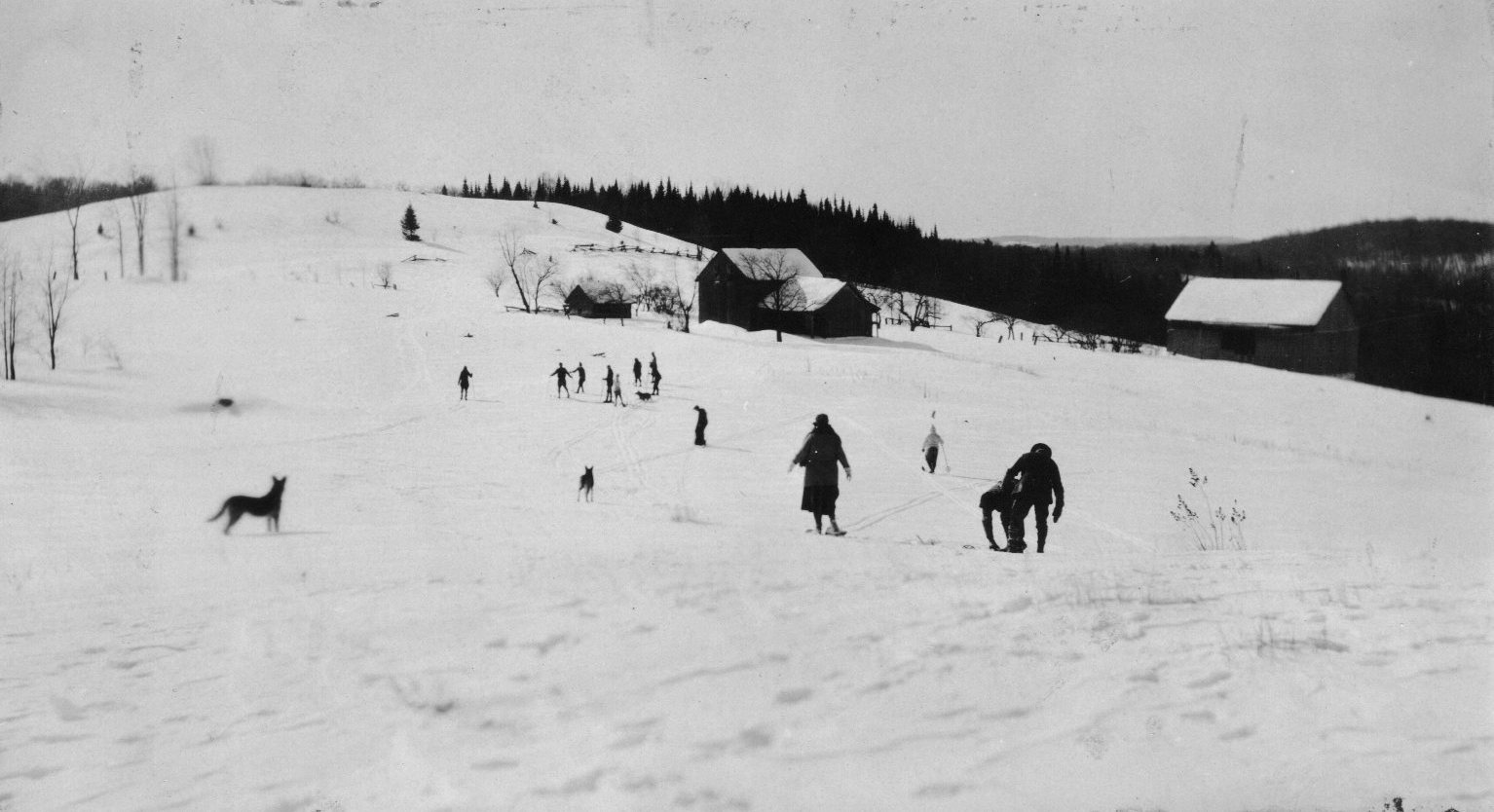 |
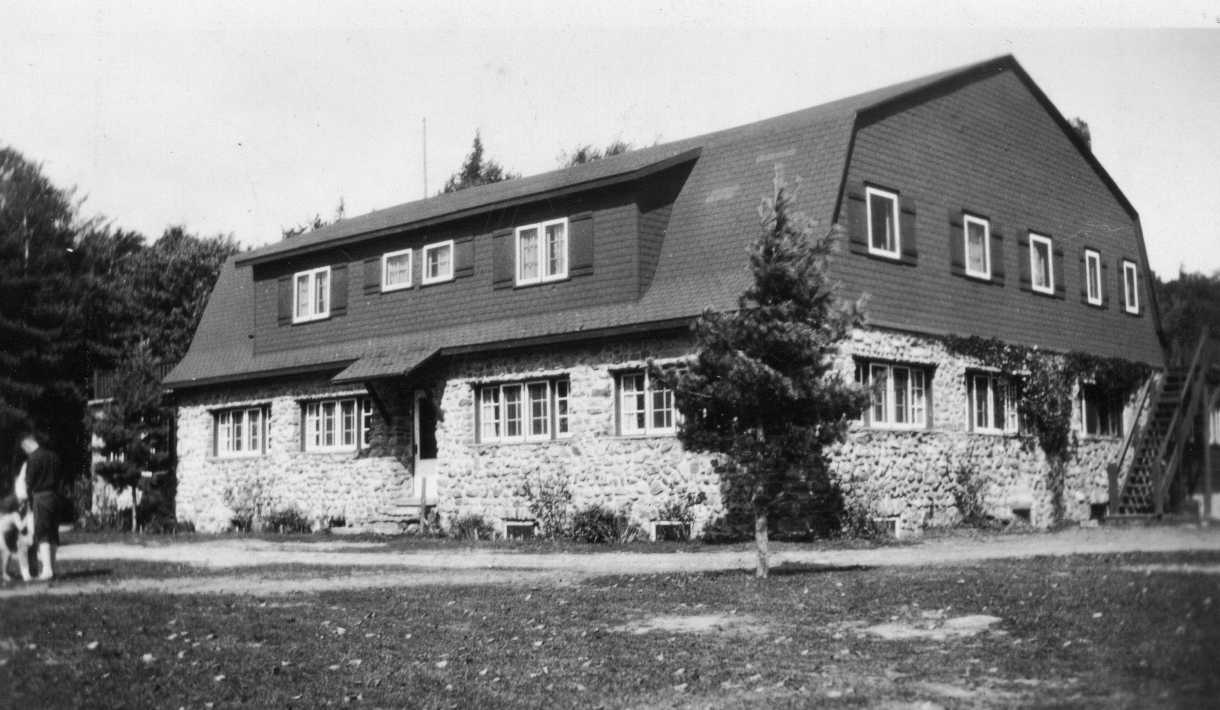 |
|
| McMaster farm, Limberlost guests skiing c. 1926 (Barbara Paterson Collection) | Second Limberlost Lodge, pre-1942 (Barbara Paterson Collection) |
Horses were Gordon’s passion. For almost 50 years, horseback riding, overnight horse pack trips, and boarding were offered out of the resort. Other popular summer activities included canoe tripping, sailing, swimming, and fishing. In winter, snowshoeing, alpine and backwoods skiing, and even skijoring were offered. The sloped McMaster clearing to the west served as the original ski hill, but later the “Top of the World Ski Hill” was developed east of the lodge. Complete with mechanized rope tow, on the highest peak in the area, the ski hill offered 350 feet of vertical drop. In addition to the many sports activities, Limberlost also was a destination for those with artistic pursuits such as painting and writing.
In 1942, the main lodge was again destroyed by fire, but the Hills rebuilt before Gordon’s death in 1947. Limberlost provided the opportunity for its guests to discover and truly explore the area, and some of those visitors purchased private camp and lakeshore lots when they became available, including on Bella and Rebecca Lakes. Descendants of many of those early cottage families reside in our community today.
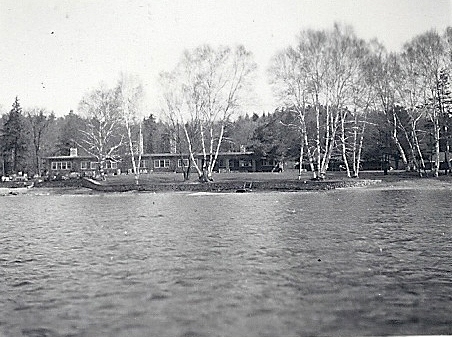 |
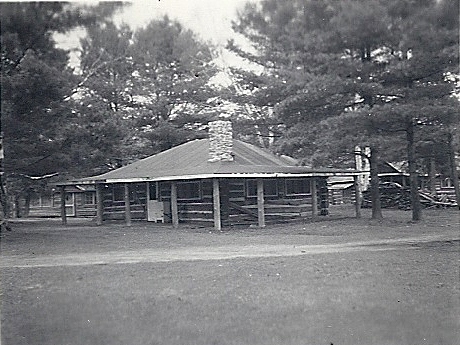 |
|
| Single-storey stone lodge building built between 1942 and 1945 (Schlegel Family Collection) | One of the cabins at Limberlost Lodge, 1945 (Schlegel Family Collection) |
Marion, and then their daughter Marion (Bobbie) and her husband, continued to run the resort until about 1969. Larger resorts in Muskoka made it continually harder to compete, and the property was sold to local cottage owners known as “The Friends of Limberlost” and then again in the late 1970s to a housing development company. These endeavours thankfully were not successful, and since the early 1980s the current owners of the property have re-established the land as the Limberlost Forest and Wildlife Reserve.
Sources:
Horton, M. Diane, comp. and ed., Limberlost Collections: Early History and Popular Activities, Contributed by Friends and Guests of Limberlost (Rockton Publishing Corp., 2005), https://limberlosttestsite.files.wordpress.com/2015/03/limberlost_collections-early_history.pdf.
Mansell, W. Dan, and Carolyn Paterson, eds., Pioneer Glimpses from Sinclair Township, Muskoka (Peterborough: asiOtus Natural Heritage Consultants, Barbara Paterson Papers, 2015).
Paterson, B., Ruth Lehman, and Robin Sharp, eds., Pioneer Memorial Untied Church: A Centennial History with 215 Photos and Illustrations (Pioneer Memorial Church, 1992).
Paterson, W., personal communications (stories about Gordon Hill and his passion for horses, as told over the years to Carolyn Paterson).
|
||



